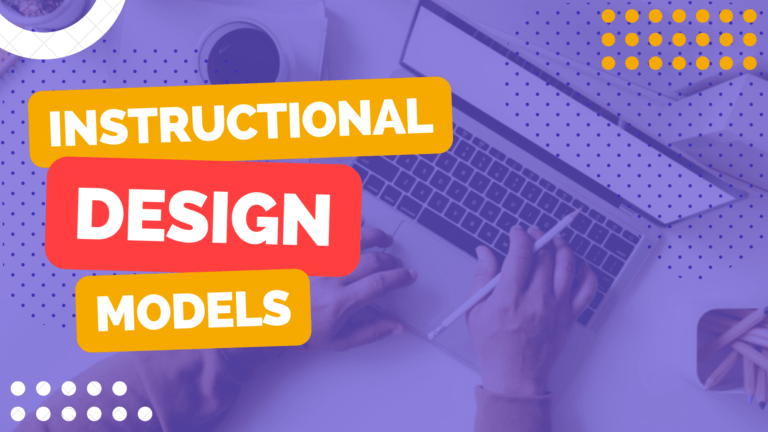The Best Ways to Apply Instructional Design Models in Your Workplace

Software engineering now includes the discipline of instructional design models. Although it has been around for a while, software professionals have only recently begun to adopt it as a discipline and utilize it in their daily work. Companies of all sizes are in greater need of instructional designers nowadays.
Today, almost everyone who uses software may anticipate being asked at some time in their professional lives to offer input on the user interface of an application or website. Even the most routine jobs are now frequently completed on computers as the world has gone digital. It’s crucial that users have a good experience with software programs as a result.
To guarantee that each user has a favorable experience with your software products, instructional designers utilize models. In order to apply them to your upcoming project, you will learn about several model types and how they are utilized in instructional design practice in this post.
Read: Agile Development: What Is It All About?
Instructional Design: What is it?
The practice of developing user interfaces that offer users direction and support is known as instructional design. Applications like online learning management systems, online training systems, and online help systems can all be made using this method.
By designing simple instructions and practical visual metaphors, instructional designers assist non-technical consumers in using technology. To do this, they design user interfaces that don’t overload consumers with too much information and rely on models to explain how to use technology.
The success of any user experience and the general usability of the software they build are the responsibility of instructional designers. No one will be able to complete their jobs successfully if your website is difficult to utilize. User interfaces can be made to be intuitive and simple to use by using instructional design concepts. While many of these models are generally used for software, they can also be applied to other kinds of applications.
Different Models of Instructional Design
In instructional design, a variety of models are employed. Below, we’ll examine three of the most typical forms and discuss their advantages and disadvantages.
Guided Discovery – The creation of tutorials that show new users how to use technology uses the guide discovery concept. With the aid of clear instructions and visual metaphors, users are directed through the process of learning how to utilize software applications.
Problem-Based Learning – In a problem-based learning environment, users are guided to find their own solutions to problems. Online training methods that encourage users to solve problems without explicitly stating what the problem is are ideal for problem-based learning.
Constructivism – The model called constructivism helps people create new things. By utilizing constructivism, instructional designers can direct users to collaborate in the creation of something new, such as a social media post or a video playing a song.
Related Work – Since instructional design models are by their very nature comparative, it is crucial to consider additional models in addition to the ones you are already utilizing. Since instructional design is a new topic, not much research has been done on best practices yet. Therefore, depending on the instructor and the course being taught, you’ll frequently discover that models are employed interchangeably.
Application of Instructional Design Models in the Workplace
The use of instructional design paradigms should not be haphazard. You should use them carefully and wisely to make sure that you are designing user interfaces that are simple to comprehend and use. An instructional design approach can be applied in three major ways:
Define user personas – It’s crucial to comprehend what a software application user is like before you begin creating personas. User interviews, surveys, and other research techniques can be used to accomplish this. You can develop a set of user personas that correspond to each user type if you have a good understanding of your users.
Plan navigation – You can begin developing navigation that leads users through the experience once you have a clear understanding of who your consumers are and what they require. Wireframes, storyboards or another design strategy can be used to accomplish this. It should be simple to use and have pre – determined paths throughout the experience while designing navigation.
Build the experience – After the experience has been developed, you may begin to build it.
Which Detailed Instructional Design Model Must You Employ?
The models used in instructional design might be of many different types. As a result, authors frequently advise employing different models in a single course. Picking the best strategy for you is crucial because in-depth techniques are often harder and take longer to learn.
It is advised that you begin with a guided discovery approach, such as the SMART method if you are new to the field. This approach leads people through a tutorial and simulates their experience doing so. After mastering this model, you can advance to models that focus on problem-based learning.
Terminology note
There are many new phrases being used in instructional design, as there are in any discipline that is just starting to gain popularity. It is crucial to comprehend the terms and their meanings before you begin work because this is particularly true when it comes to models and terminology. The names are frequently used interchangeably and aren’t truly the right ones. Here are a few typical ones to be on the lookout for.
Model – A model is a concept that clarifies how something functions or how to carry out a task.
Metaphor – A metaphor is a phrase or representation that alludes to something that is not actually present.
Model/Metaphor – A model/metaphor is a model that explains how it functions using a metaphor.
Instructional Design – The art of designing user interfaces with instructions and support for users is known as instructional design.
User Interface – A software application’s visual representation is called a user interface.
Newbie – One who is fresh to a field or subject is referred to as a newbie.
UI Design – The visual layout of an application is known as UI design.
RTI – Response time, or RTI, refers to how long it takes for a user to get a response from a system. Although these are not exact terms, they are frequently used synonymously. To use them appropriately, you must comprehend their meanings and usage patterns. This will make it easier for users to comprehend and navigate your documentation.







